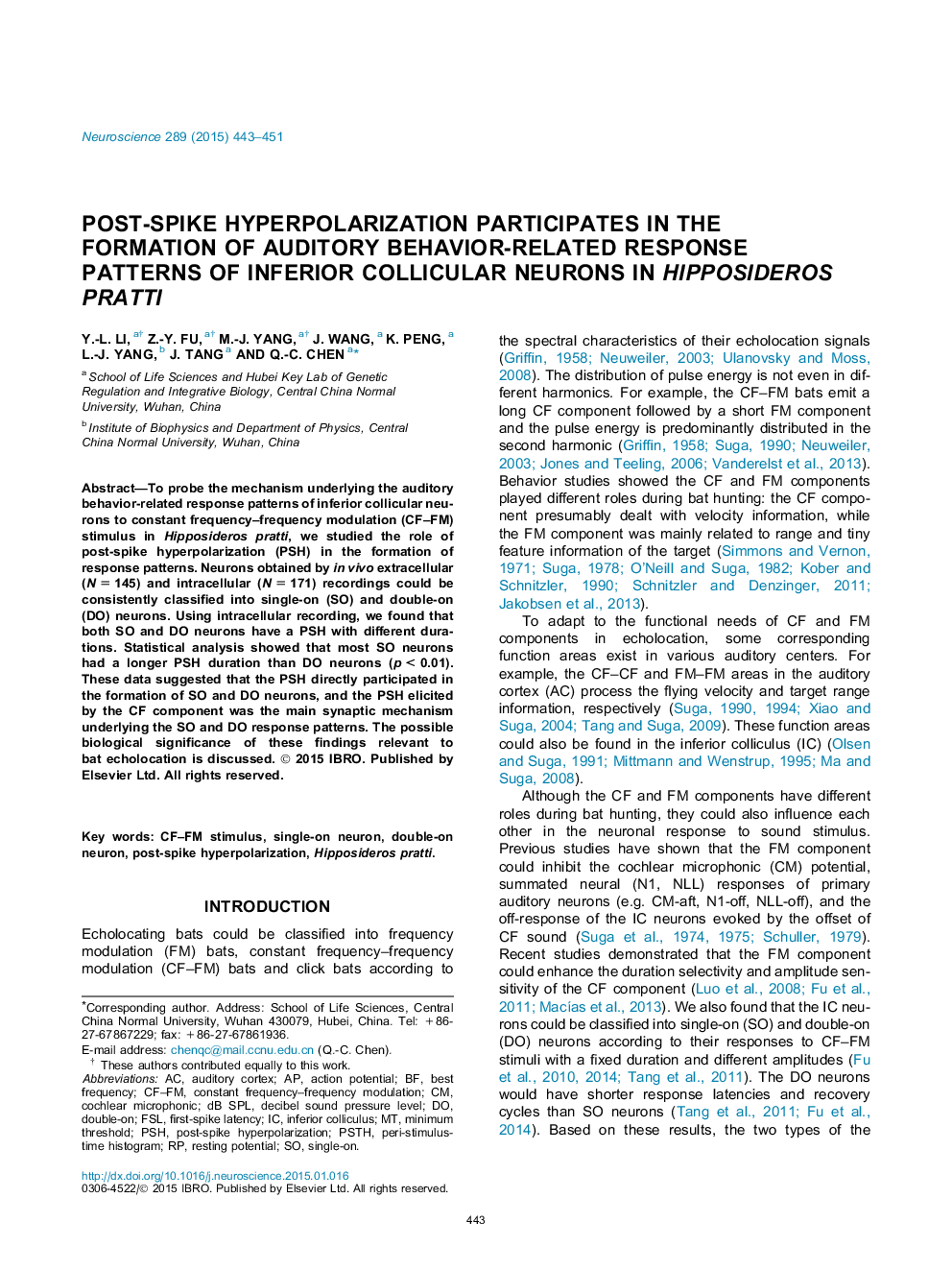| Article ID | Journal | Published Year | Pages | File Type |
|---|---|---|---|---|
| 4337549 | Neuroscience | 2015 | 9 Pages |
•Stimulated with CF–FM sounds, the bat IC neurons discharge as SO or DO responders.•65.1% of the SO neurons have long-duration post-spike hyperpolarizations.•75% of the DO neurons have no or inconspicuous post-spike hyperpolarizations.•Post-spike hyperpolarizations are thought to shape the SO and DO neurons.•The biological relevance of these findings in relation to bat hunting is discussed.
To probe the mechanism underlying the auditory behavior-related response patterns of inferior collicular neurons to constant frequency–frequency modulation (CF–FM) stimulus in Hipposideros pratti, we studied the role of post-spike hyperpolarization (PSH) in the formation of response patterns. Neurons obtained by in vivo extracellular (N = 145) and intracellular (N = 171) recordings could be consistently classified into single-on (SO) and double-on (DO) neurons. Using intracellular recording, we found that both SO and DO neurons have a PSH with different durations. Statistical analysis showed that most SO neurons had a longer PSH duration than DO neurons (p < 0.01). These data suggested that the PSH directly participated in the formation of SO and DO neurons, and the PSH elicited by the CF component was the main synaptic mechanism underlying the SO and DO response patterns. The possible biological significance of these findings relevant to bat echolocation is discussed.
